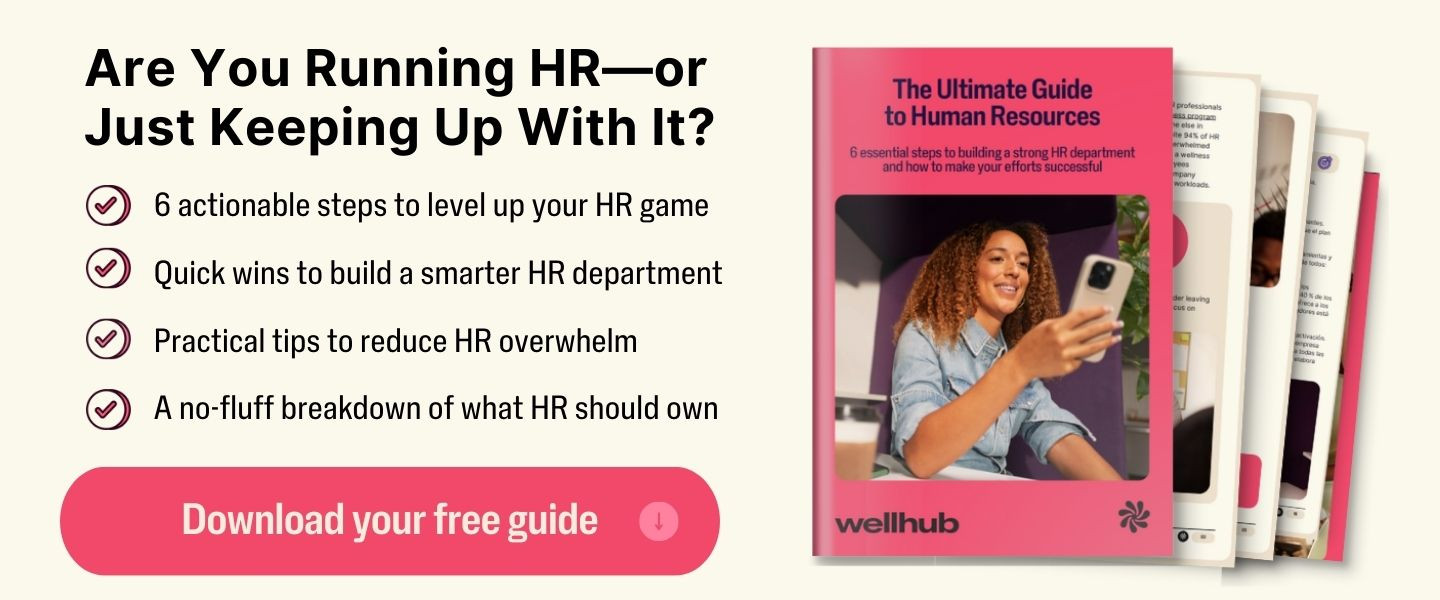Termination Letter Template & 3-Step HR Risk Framework
Last Updated Nov 25, 2025

Key Takeaways
- Effective HR risk mitigation starts long before the termination letter and continues well after it is delivered. The 3-step framework—pre-letter documentation, careful drafting, and post-separation logistics—helps HR leaders ensure each separation is fair, compliant, and consistent. This approach reduces legal exposure while also protecting employee dignity and overall company culture.
- Strong documentation is your best defense, especially in for-cause terminations. Detailed records of policy violations, PIPs, warnings, and meeting notes show decisions are based on objective evidence, not bias or retaliation. Even in at-will environments, legal review of both the decision and the letter helps guard against claims of discrimination, retaliation, or wrongful discharge.
- A well-crafted termination letter is concise, factual, and fully aligned with the employee’s file. Including key elements—effective date, factual reason, final pay, severance terms, benefits references, property return, and HR contact—creates a clear, defensible record. Avoiding emotional language or undocumented details keeps the letter clean, compliant, and easier to stand behind if challenged.
- Understanding ‘with cause’ vs. ‘without cause’ separation shapes tone, benefits, and documentation requirements. Cause-based terminations rely on extensive performance or misconduct records, are often immediate, and rarely include severance, making their legal risk higher. Without-cause separations center on business reasons, usually involve notice and severance, and call for a more empathetic, business-focused communication style.
- Post-separation workflows are critical for protecting systems, data, and organizational trust. Tight processes around final pay, COBRA notices, asset return, IT access cutoffs, and confidentiality reminders keep risk low and operations stable. Immediate documentation updates and thoughtful internal communications help the organization stay audit-ready while reassuring remaining employees during a sensitive transition.
Terminations can be risky. A misstep in the process can spark legal claims, damage company culture, or leave former employees feeling blindsided and disrespected.
It’s not enough to draft a solid termination letter. Risk mitigation starts well before the first sentence is written and doesn’t stop after the employee walks out the door. Without a structured approach, HR leaders face too many opportunities for inconsistency, miscommunication, and exposure.
That’s why a clear, compliant separation framework is essential. One that guides every step — from documentation to delivery to post-exit logistics — with fairness, clarity, and legal defensibility baked in.
Uncover the 3-step framework that helps protect your organization while preserving employee dignity.

HR Risk Mitigation: The 3-Step Best Practice Termination Framework
When it comes to termination, a well-drafted letter is only one piece of the puzzle. True risk mitigation begins before the letter is ever written and continues after it's delivered. That’s why we recommend using this 3-step framework to ensure every separation is handled with clarity, fairness, and compliance.
This framework helps HR leaders reduce legal exposure, support employee dignity, and protect company culture. Let’s break it down.
Step 1: Pre-Letter Documentation & Review
The best way to defend a termination is to document it before it happens.
This step is especially critical for for-cause terminations, where legal risk is highest. You need a detailed paper trail that shows progressive discipline and proves that the decision was made based on objective evidence—not bias or retaliation.
Here’s what to include in the employee’s file:
Pre-Letter Documentation Checklist
- Required Documentation for ‘For Cause’ Termination
- Specific dates and descriptions of policy violations
- Signed performance improvement plans (PIPs)
- Dates of written and verbal warnings
- Notes from coaching or disciplinary meetings
- A copy of the relevant policy or handbook section
Best Practice: Before delivering the letter, have both the decision and the draft reviewed by legal counsel. Even in at-will employment states, this review is your strongest defense against claims of discrimination, retaliation, or wrongful discharge.
Risk Mitigation Tip: At-will doesn’t mean at-risk. A poorly handled termination can still trigger claims under anti-discrimination or whistleblower laws. Make sure your internal review process accounts for perception as well as procedure.
Step 2: Drafting the Separation Letter
Once documentation is in order, it's time to craft the letter itself. This letter becomes the official record of the decision, so clarity and consistency are key.
Use these 7 critical components to meet termination letter standards and fulfill employee separation requirements:
7 Critical Components of a Termination Letter
| Component | Description |
| 1 | Effective Date | The final date of employment. |
| 2 | Factual Reason | A brief, documented, non-emotional reason for termination. |
| 3 | Final Pay Date | State when and how the final paycheck will be delivered. |
| 4 | Severance Terms | If applicable, include offer and conditions (e.g., release of claims). |
| 5 | Benefits/COBRA Reference | Mention that COBRA information will be mailed separately. |
| 6 | Property Return List | Clearly list any items that must be returned (e.g., laptop, keycard). |
| 7 | HR Contact | Provide the name and contact details for follow-up questions. |
Drafting principle: Keep it concise and factual. Avoid emotional or subjective language. If it’s not documented in the employee file, it doesn’t belong in the letter.
This standard protects your organization by aligning your message with what’s provable and defensible.
Step 3: Post-Separation Logistics — Managing Final Pay, Benefits, and State Notices
The work doesn’t end after the termination letter is delivered. There are several critical post-separation actions that ensure compliance with federal and state laws—and protect your organization from liability.
Final Paycheck Guidance
Final paycheck rules vary by state. In some states (like California), the final paycheck is due immediately if the employee is terminated on the spot. Others allow up to 72 hours.
Best practice: Create a state-by-state final pay checklist and review it every six months. Ensure payroll teams are notified in advance of the termination meeting to ensure on-time payment.
COBRA Notice
Employers are required to notify eligible employees of their right to continue health coverage under COBRA. This notice typically comes from your benefits administrator, but it’s your responsibility to:
- Confirm the notice is sent within 14 days
- Clarify in the letter that separate benefits info will follow
- Track delivery and document confirmation
State-Specific Separation Notices
Some states require additional notices at the time of separation. These documents guide employees on how to apply for unemployment benefits or access workforce support.
Examples:
- California: DE 2320 – For unemployment insurance.
- New York: Record of Employment form.
- Texas: Unemployment Insurance Notice.
What is the Difference Between 'With Cause' vs. 'Without Cause' Separation?
Before you draft a letter or schedule a meeting, it’s essential to understand exactly what type of separation you’re managing.
This decision shapes everything that follows — from the tone of your communication to the benefits owed and the documentation required. Getting this right protects your organization from unnecessary risk and supports a consistent, fair offboarding experience.
A with cause separation happens when the organization ends employment because the employee has violated a policy, engaged in misconduct, or consistently failed to meet performance expectations. These situations rely heavily on documentation — things like written warnings, PIPs, or investigation findings. Because these terminations are rooted in employee behavior, they tend to involve immediate separation and little or no severance.
A without cause separation, on the other hand, is not about performance or misconduct. It occurs when the company ends employment for business reasons — restructuring, budget changes, position elimination, or strategic shifts. These separations require a clear business rationale and typically involve notice periods, severance packages, and a more supportive, empathetic tone.
Now that the definitions are clear, let’s look at the distinctions side-by-side.
Key Distinction: HR Criteria for Cause vs. No-Cause Separation
Let’s break down the core differences between the two:
Criteria | With Cause | Without Cause |
| Triggering Reason | Misconduct, policy violation, or performance failure | Restructuring, downsizing, or role elimination |
| Documentation Needed | Extensive — PIPs, warnings, investigations | Light — restructure memo, business rationale |
| Severance | Rarely offered | Common; often conditional on release of claims |
| Effective Date | Immediate in most cases | Often includes notice period or future effective date |
| Legal Risk Profile | Higher — often challenged if not well documented | Lower, but still requires clear rationale and consistency |
| Tone of Letter | Formal, direct, and grounded in documentation | Empathetic, logistical, and business-focused |
Template 1: Separation for Cause
[Company Letterhead]
[Date]
[Employee Name]
[Employee Address]
[City, State ZIP]
Subject: Employment Separation Notice
Dear [Employee Name],
This letter confirms that your employment with [Company Name] is terminated effective [Last Day of Employment].
This decision follows the final warning issued on [Date] regarding [brief, factual description of the misconduct or policy violation]. As documented in your [performance improvement plan / written warning / investigation summary], this conduct violates [specific policy name or handbook section], which you previously acknowledged receiving.
Because the performance and conduct issues noted above have continued despite prior corrective action, the company has determined that separation is necessary.
Final Pay and Benefits
Your final paycheck, including all wages owed through your last day of employment, will be provided [in accordance with state law / on Date]. Any accrued and unused [PTO/vacation, if applicable in your state] will be paid out according to company policy and state requirements.
You will receive a separate communication regarding your eligibility to continue healthcare benefits under COBRA. That notice will include instructions for enrollment and deadlines for continuation.
Company Property
Please return all company property no later than [Date]. This includes, but is not limited to:
- Laptop and accessories
- Mobile devices
- Building access cards and keys
- ID badges
- Documents, files, or storage devices belonging to the company
Post-Employment Obligations
Your obligations under the [Non-Disclosure Agreement / Confidentiality Agreement / Non-Solicitation Agreement], signed on [Date], remain in effect. Please review those documents to ensure full compliance.
HR Contact
If you have questions regarding your final pay, benefits, or property return, contact [HR Contact Name, Title] at [Phone Number] or [Email Address].
Sincerely,
[Name]
[Title]
[Company Name]
Template 2: Separation Without Cause (Restructuring/Layoff)
[Company Letterhead]
[Date]
[Employee Name]
[Employee Address]
[City, State ZIP]
Subject: Employment Separation Notice
Dear [Employee Name],
I am writing to inform you that your position with [Company Name] is being eliminated as part of a broader organizational [restructuring / business realignment / budget reduction]. As a result, your employment will end effective [Last Day of Employment].
This decision is not a reflection of your performance. It is the result of changes the company is making to support its long-term business needs.
Severance and Release of Claims
You are eligible for a severance package, which includes:
- [Severance amount or formula]
- [Continuation of benefits, if applicable]
- [Outplacement services, if offered]
To receive this severance package, you must sign and return the enclosed [Waiver and Release of Claims]. This document must be returned no later than [Deadline Date]. The agreement outlines the full terms of your severance and provides the legally required consideration period [e.g., 21 or 45 days, depending on federal requirements].
Severance payments will be issued after the signed release has been received and the revocation period, if applicable, has expired.
Final Pay and Benefits
Your final paycheck, including all wages owed through your last day of employment, will be issued on [Date], in accordance with state requirements. You will receive information about your eligibility to continue healthcare coverage under COBRA in a separate mailing. That notice will include instructions and deadlines for continuing your benefits.
Company Property
Please return all company property no later than [Date]. This includes items such as:
- Laptop and accessories
- Mobile devices
- Company credit cards
- Building access cards and keys
- ID badges
- Documents, files, or equipment belonging to the company
Additional Support
We recognize that transitions like this can be challenging. [Company Name] remains committed to supporting you through this change. If outplacement or career transition support is available, those details are included in your separation packet.
HR Contact
If you have questions about your benefits, severance documents, or final pay, you may contact [HR Contact Name, Title] at [Phone Number] or [Email Address].
Thank you for your contributions to [Company Name]. We wish you continued success in the future.
Sincerely,
[Name]
[Title]
[Company Name]

Template 3: Mass Layoff Separation Letter Template
[Company Letterhead]
[Date]
[Employee Name]
[Employee Address]
[City, State ZIP]
Subject: Employment Separation Notice
Dear [Employee Name],
I am writing to inform you that [Company Name] is conducting a company-wide [reduction in force / restructuring / business realignment] due to [brief business rationale: e.g., economic conditions, organizational consolidation, strategic realignment]. As part of this restructuring, your position has been eliminated, and your employment will end effective [Last Day of Employment].
This decision is not related to your performance. It is the result of organizational changes affecting multiple positions across the company.
Severance and Release of Claims
You are eligible for a severance package provided to employees impacted by this reduction in force. Your package includes:
- [Severance amount or formula]
- [Continuation of benefits or stipend, if applicable]
- [Outplacement or career transition services, if offered]
To receive severance benefits, you must sign and return the enclosed [Waiver and Release of Claims] by [Deadline Date]. This agreement outlines the complete terms of your severance and includes the legally required consideration period of [21 or 45 days, depending on applicability of the Older Workers Benefit Protection Act]. Severance payments will begin after the company receives the signed agreement and any required revocation period has passed.
Final Pay and Benefits
Your final paycheck, including all wages owed through your last day of employment, will be provided on [Date], consistent with state law. You will also receive a separate COBRA notice with information on how to continue healthcare coverage after your employment ends.
Group Disclosure (If Required Under OWBPA)
Because this separation is part of a group layoff, you are receiving an additional disclosure listing the job titles and ages of employees who were selected and not selected for termination in the affected group, as required under federal law. Please review this information as you consider your severance agreement.
Company Property
Please return all company property no later than [Date]. This includes:
- Laptops and accessories
- Mobile devices
- Keycards, access badges, or office keys
- Company credit cards
- Documents, files, and any other company-owned equipment
Support During This Transition
We understand that a reduction in force can be a difficult transition. [Company Name] is committed to offering support, and additional resources are included in your separation packet. If the company is providing outplacement services, career coaching, or internal referrals, those details appear in the attached materials.
HR Contact
If you have questions about your severance, benefits, or final pay, please contact [HR Contact Name, Title] at [Email] or [Phone Number].
Thank you for your work and the contributions you’ve made to [Company Name]. We wish you success in your future endeavors.
Sincerely,
[Name]
[Title]
[Company Name]
Template 4: Mass Layoff Separation Letter Template for Unionized Employees
[Company Letterhead]
[Date]
[Employee Name]
[Employee Address]
[City, State ZIP]
Subject: Employment Separation Notice
Dear [Employee Name],
This letter confirms that [Company Name] is implementing a [reduction in force / restructuring / business realignment] affecting multiple positions represented by [Union Name]. Your role is among those impacted, and your employment will end effective [Last Day of Employment].
This separation is not related to your performance. It is the result of business needs identified through the company’s restructuring process. The company has notified [Union Name] and engaged in discussions consistent with the requirements outlined in our collective bargaining agreement.
Collective Bargaining Agreement Provisions
Your separation and all associated benefits will follow the terms set forth in the [CBA Name, Article, Section]. This includes:
- Seniority-based layoff selection (if applicable under the CBA)
- Bumping rights or reassignment procedures
- Recall rights or rehire eligibility
- Notification and communication requirements
If the CBA provides a specific process for displacement, bumping, or placement into available roles, those details will be reviewed with you separately.
Severance and Release of Claims
Employees impacted by this reduction in force are eligible for [Company’s Severance Package / Union-Negotiated RIF Benefits], which include:
- [Severance amount or formula]
- [Benefits continuation or stipend, if applicable]
- [Outplacement or career transition support]
If your severance package requires a Waiver and Release of Claims, the document will be included. To receive severance benefits, you must sign and return the release by [Deadline Date], in accordance with the timelines outlined in the agreement. Severance will be issued after the signed release is received and any required revocation period has expired.
If the CBA mandates severance terms and does not require a release, replace this section accordingly.
Final Pay and Benefits
Your final paycheck will include all wages owed through your last day of employment and will be issued [on Date / in accordance with state law]. You will receive a separate COBRA notice outlining your healthcare continuation options.
OWBPA Notice (If Applicable)
Because this separation is part of a group layoff, you are receiving an Older Workers Benefit Protection Act disclosure listing the ages and job titles of represented employees selected and not selected for layoff within the affected unit.
Company Property
Please return all company property by [Date], including:
- Laptop and accessories
- Mobile devices
- Keys, access cards, and badges
- Protective equipment or uniforms
- Company files or equipment
Union Support and Next Steps
You may consult with your [Union Representative / Shop Steward] regarding your rights under the collective bargaining agreement, including recall rights or bumping options. The company will continue to coordinate closely with the union throughout this process.
HR Contact
If you have questions about your pay, benefits, or the logistics of your separation, contact [HR Contact Name, Title] at [Email Address] or [Phone Number].
Thank you for your service to [Company Name]. We wish you success in your future endeavors.
Sincerely,
[Name]
[Title]
[Company Name]
HR Best Practices Managing Assets and Confidentiality Post-Separation
The moments right after a separation are some of the most operationally important in the entire offboarding process. This is where you protect your systems, safeguard your data, and ensure a smooth transition for everyone still on the team. A thoughtful workflow here not only protects your organization — it reinforces trust and a sense of stability for remaining employees.
Below are the best practices HR leaders can rely on when managing assets, access, and confidentiality after a separation.
Asset Return and IT Protocol
When someone leaves the organization, you want a process that is fast, clean, and consistent every single time. That’s what protects your systems and keeps your risk profile low.
IT & Asset Protection: The 5-Point Cut-Off Protocol
This protocol creates a predictable, repeatable sequence your HR and IT teams can execute together.
- Revoke email access prior to the separation meeting. This prevents unauthorized access without disrupting ongoing business before the employee is informed.
- Collect physical assets immediately after the meeting. This includes all hardware and company-owned equipment handed out during employment.
- Disable building access the same day. Update building security, badge readers, and visitor management systems to reflect the employee’s departure.
- Deactivate software licenses. Remove access to internal systems, cloud platforms, and third-party vendor tools that contain company data.
- Send a confirmation email detailing the asset list. Provide a complete list of items returned and those still outstanding so there is clarity for both HR and the employee.
These steps protect your infrastructure while keeping the offboarding process highly organized.
Detailed Asset List
Below is a comprehensive list of common items companies ask employees to return. Including this list in your workflow checklist — and, when appropriate, in your separation letter — helps set clear expectations.
- Laptop and charger
- Monitor, keyboard, mouse, docking station
- Company-issued phone or tablet
- Headsets or audio equipment
- ID badges, key cards, building fobs
- Keys to offices, desks, or file cabinets
- Corporate credit cards
- Uniforms, PPE, or branded equipment
- Hardware authentication tokens
- USB drives or storage devices
- Software licenses assigned to the employee
- Hard-copy documents, notebooks, binders, or printed materials
- Intellectual property or company-owned creative assets
Having this master list ready makes your process smoother and ensures nothing slips through the cracks.
Confidentiality and Non-Compete
Even after a separation, an employee’s confidentiality and non-compete obligations often remain fully in effect. Reinforcing this in the separation letter helps protect your organization’s intellectual property without re-negotiating or altering the original agreement.
Advisory Guidance: Reinforcing Confidentiality and Non-Compete Agreements
The separation letter should confirm the agreements the employee previously signed — not restate or reinterpret them. Your goal is to anchor the employee back to the original documents without implying new terms.
A simple, defensible way to do that is to reference the agreements by name and original signature date. That keeps the letter factual and legally clean.
Here is the recommended phrasing to use:
“You remain bound by the terms of the Non-Disclosure Agreement and Non-Solicitation Agreement signed on [Date].”
This sentence is a best-practice standard for offboarding. It’s clear. It’s direct. And it avoids introducing new contractual language that could unintentionally alter the agreement.

Post-Separation: Documentation and Communication Standards
Once the separation meeting wraps, your work isn’t quite done. This stage is where HR leaders protect the organization by tightening up documentation, closing loops, and guiding internal communication with care. When done well, this step strengthens compliance, reduces legal exposure, and preserves stability across the team.
Let’s walk through the two practices every HR leader should follow after a separation decision is completed.
Documentation Strategy
Documentation is the backbone of defensible HR decisions. It tells the story of what happened, why it happened, and how it was handled — and when you face an audit or legal inquiry, this record becomes indispensable.
The best practice is simple: file everything immediately. Not at the end of the week. Not after a batch process. Immediately.
Here’s what should be added to the employee’s HR file:
- The signed termination letter
- The asset return checklist, with notes on items returned or outstanding
- All performance documentation, such as PIPs, written warnings, coaching notes, meeting summaries
- Any investigation findings or relevant reports (for cause cases)
- The severance agreement, if applicable
- Any email confirmations tied to the offboarding process (e.g., confirmation that access was disabled)
This ensures your records stay complete, consistent, and audit-ready — a huge advantage when you need to reference decisions months or even years later.
Internal Communication Strategy
Once documentation is in order, it’s time to turn to internal communication. And this is where clarity, empathy, and discretion matter more than ever.
Your goal is to acknowledge the employee’s departure without sharing details that are private, unnecessary, or potentially risky.
A reliable best-practice message includes three elements:
- A simple confirmation that the person is no longer with the organization. (“I want to share that Jordan Davis is no longer with the company as of today.”)
- Clarity on what happens next for the team. (“We will be distributing Jordan’s responsibilities across the team for now, and more information will follow next week.”)
- A respectful, future-focused tone — without mentioning the reason for separation. (“Please join me in wishing Jordan well in their next chapter.”)
The key is to communicate the fact of the departure, not the context behind it. You’re protecting the employee’s privacy and shielding the company from unnecessary legal exposure. The tone should stay warm, steady, and forward-looking — especially because your team will take their cues from you.
Termination Letter FAQs
How do you write a simple termination letter?
A simple termination letter includes the essentials — no extra commentary, no unnecessary detail. Focus on four core elements:
- The effective date of termination
- A brief, factual reason, if your organization provides one
- Final pay and benefits information
- Next steps and a clear HR contact
A simple letter is clean, concise, and sticks to information the company can support with documentation. Think of it as an official record, not a recap of your entire employment journey with the individual.
How do I politely terminate an employee?
Politeness in a termination letter comes from clarity delivered with respect. You’re not softening the decision — you’re delivering it in a way that preserves a person’s dignity.
Here is what that looks like:
- Stay factual, not emotional
- Acknowledge contributions where appropriate
- Use straightforward, neutral language
- Focus on logistics and next steps
Politeness is not about making the message longer. It’s about ensuring the employee feels respected, even as you deliver difficult news.
What not to put in a termination letter?
This is where risk mitigation matters most. A termination letter should never include:
- Opinions, emotions, or subjective assessments
- Any new information not already documented
- Speculation about the employee’s intentions
- Language that could imply discrimination or retaliation
- Promises about future opportunities or rehire guarantees
- Detailed narratives or explanations of what “really happened”
When in doubt, if it’s not in the employee’s file — it doesn’t belong in the letter.
What is an example of a termination statement?
Here are two clear, defensible examples:
For cause: “This decision follows the final written warning you received on May 8 regarding your violation of the company’s Acceptable Use Policy.”
Without cause: “Your position is being eliminated due to organizational restructuring, and your employment will end effective July 12.”
Both examples are direct, factual, and grounded in documentation — exactly what you want in a termination statement.
Lower Employee Stress, Avoid Separations
Separation work pulls you into high-pressure decisions, intense emotions, and strict compliance rules. These moments drain teams and often create fear, confusion, and burnout across the organization.
A strong wellbeing program brings steady support long before a termination ever happens. It lifts performance, strengthens resilience, and reduces burnout that often drives policy issues or performance struggles. Companies with robust wellbeing offerings see employees engage more and miss fewer days, which helps prevent escalations.
Speak with a Wellhub team member to create a calmer work environment.

Company healthcare costs drop by up to 35% with Wellhub*
See how we can help you reduce your healthcare spending.
[*] Based on proprietary research comparing healthcare costs of active Wellhub users to non-users.
Category
Share

The Wellhub Editorial Team empowers HR leaders to support worker wellbeing. Our original research, trend analyses, and helpful how-tos provide the tools they need to improve workforce wellness in today's fast-shifting professional landscape.
Subscribe
Our weekly newsletter is your source of education and inspiration to help you create a corporate wellness program that actually matters.
Subscribe
Our weekly newsletter is your source of education and inspiration to help you create a corporate wellness program that actually matters.
You May Also Like

Attrition, Turnover & Retention Differences Explained | Wellhub
Clearly understand the attrition, turnover, retention difference to improve workforce planning, reduce costs, and strengthen your people strategy.

10 Exit Interview Questions to Ask | Wellhub
Discover the top 10 exit interview questions to ask employees. Gain valuable feedback, identify areas for improvement, and enhance your workplace culture.

Employee Retention Guide | Wellhub
Discover effective strategies for employee retention.Improve engagement, boost morale, and create a positive work environment to retain top talent.